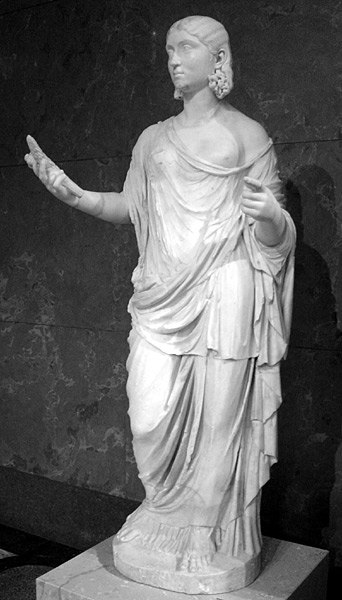The Matres and Matronae were female deities venerated in Northwestern Europe, of whom relics are found dating from the first to the fifth century AD. They are depicted on votive offerings and altars that bear images of goddesses, depicted almost entirely in groups of three, that feature inscriptions and were venerated in regions of Germania, Eastern Gaul, and Northern Italy that were occupied by the Roman army from the first to the fifth century.
Terracotta relief of the Matres (the Vertault relief), from the Gallo-Roman settlement of Vertillum (Vertault) in Gaul.
An altar of the Aufanian Matronae, excavated in the Bonn Minster (Rheinisches Landesmuseum Bonn)
A goddess is a female deity. In many known cultures, goddesses are often linked with literal or metaphorical pregnancy or imagined feminine roles associated with how women and girls are perceived or expected to behave. This includes themes of spinning, weaving, beauty, love, sexuality, motherhood, domesticity, creativity, and fertility. Many major goddesses are also associated with magic, war, strategy, hunting, farming, wisdom, fate, earth, sky, power, laws, justice, and more. Some themes, such as discord or disease, which are considered negative within their cultural contexts also are found associated with some goddesses. There are as many differently described and understood goddesses as there are male, shapeshifting, or neuter gods.
Queen Nefertari being led by Isis, the Ancient Egyptian mother goddess of magic
Portrait-Statue of an unknown woman as Ceres, Roman goddess of agriculture and motherly relationships
The goddess Freyja is nuzzled by the boar Hildisvíni while gesturing to Hyndla (1895) by Lorenz Frølich.
The Hindu warrior goddess Durga killing the buffalo-demon Mahishasura.






